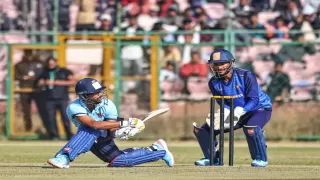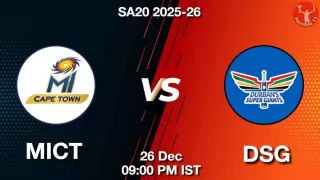Types Of Out In Cricket Match? 10 Official OUT In ICC Rules 2023

Cricket is a fascinating game with a rich history and numerous rules. One of the most critical aspects of the game is the dismissal of the batsman, and there are ten ways in which a batsman can be dismissed in cricket. In this blog, we will explain each type of dismissal in detail and provide an example for better understanding.
| Mode of Dismissal | Introduced by ICC |
|---|---|
| Bowled | n/a (since the game's earliest days) |
| Caught | n/a (since the game's earliest days) |
| Stumped | n/a (since the game's earliest days) |
| Run-out | n/a (since the game's earliest days) |
| Leg Before Wicket (LBW) | 1774 (first recorded mention) |
| Hit-wicket | 1800s (exact year not recorded) |
| Obstructing the field | 1950s (exact year not recorded) |
| Timed out | 1980s (exact year not recorded) |
| Retired hurt | 1890s (exact year not recorded) |
| Handed the ball | 1900s (exact year not recorded) |
It's worth noting that the original modes of dismissal (bowled, caught, stumped, and run-out) have been a part of cricket since the game's earliest days. The other modes of dismissal were added over time as the rules and conventions of the game evolved.
Here is the Detailed analysis of types of out in Cricket by ICC Rules Latest Updated
How Many Types Of Out In Cricket Match? The ten ways in which a batsman can be dismissed in cricket are bowled, caught, stumped, run-out, LBW, hit-wicket, obstructing the field, timed out, retired hurt, and handed the ball. Each type of dismissal requires a different set of skills by the bowler, fielder, or umpire, and they add to the excitement and drama of the game. As a cricket fan, it is essential to understand the rules and nuances of the game to fully appreciate its beauty and complexity.
Bowled
Caught
Stumped
Run Out
LBW (Leg Before Wicket)
Hit Wicket
Obstructing the field
Timed Out
Retired Hurt
Handed the ball

Image Source: Australian Cricket Team/ ICC
When Player is given Bowled out? Bowled is the most common way in which a batsman can be dismissed in cricket. When the ball hits the stumps directly and dislodges the bails, the batsman is considered out. This type of dismissal is often due to a mistake by the batsman or an excellent delivery by the bowler. For example, during the 2019 Cricket World Cup, England's Jofra Archer bowled a stunning delivery to dismiss South Africa's Hashim Amla.

Image Source: Virat Kohli/BCCI
When Player is given Caught out? When the batsman hits the ball and it is caught by a fielder before it hits the ground, the batsman is out. This type of dismissal requires a combination of skill and precision by the fielder, and it is considered one of the best ways to dismiss a batsman. An excellent example of a caught dismissal was during the 2005 Ashes series when England's Andrew Flintoff caught Australia's Ricky Ponting.

Image Source: Twitter/ICC
When Player is given Stumped out? When the batsman is out of his crease and misses the ball, and the wicketkeeper collects the ball and dislodges the bails with the ball while the batsman is still out of his crease, he is considered stumped. This type of dismissal requires quick reflexes and excellent decision-making skills by the wicketkeeper. An example of stumped dismissal was during the 2012 T20 World Cup when West Indies' Marlon Samuels stumped Pakistan's Nasir Jamshed.

Image Source: Twitter/BCCI
When Player is given Run Out? When the batsman is trying to score a run, and the fielder hits the stumps with the ball before the batsman reaches the crease, he is considered run out. This type of dismissal requires excellent fielding skills and a quick reaction time by the fielder. An excellent example of a run-out dismissal was during the 2019 Cricket World Cup when England's Jos Buttler ran out New Zealand's Martin Guptill to win the game.

Image Source: Twitter/ICC
When Player is given LBW out? When the ball hits the batsman's leg in front of the stumps, and the umpire believes that the ball would have gone on to hit the stumps if the leg had not been there, he is considered out. This type of dismissal requires a careful judgment by the umpire, and it is often a controversial decision. An excellent example of an LBW dismissal was during the 2005 Ashes series when England's Simon Jones bowled Shane Warne.

Image Source: Twitter/BCCI
When Player is given Hit Wicket out? When the batsman dislodges the bails himself while playing a shot or in the process of playing a shot, he is considered out. This type of dismissal is rare but can occur due to the batsman's carelessness. An example of hit wicket dismissal was during the 2019 Indian Premier League when Kolkata Knight Riders' Robin Uthappa hit his own stumps while playing a shot.

Image Source: Twitter
When Player is given out on Obstructing the field? When the batsman deliberately obstructs the fielder from fielding the ball, he is considered out. This type of dismissal is rare but can occur if the batsman tries to stop the ball from hitting his stumps with his hand or bat. An example of obstructing the field dismissal was during the 2017 Champions Trophy when South Africa's Faf du Plessis obstructed the ball with his gloves.

Image Source: Twitter/ICC
When Player is given out on Timed Out? When a new batsman takes more than three minutes to come to the crease after the fall of a wicket, he is considered timed out. This type of dismissal is rare but can occur if the new batsman is not ready to come to the crease or if he is delayed due to some unforeseen circumstances. An example of timed-out dismissal was during the 2009 Ashes series when England's Ian Bell was timed out.

Image Source: Twitter/ICC
When Player is given out on Retired Hurt? When a batsman is injured during the match and is unable to continue batting, he can retire hurt. This means that he can return to bat later in the innings if he is fit to do so. However, if he is unable to return, he is considered retired out. This type of dismissal is not counted in the total number of dismissals for the team, and the batsman's score remains as it is. An example of retired hurt was during the 2018 Test match between India and England when India's Shikhar Dhawan retired hurt due to a finger injury.

Image Source: Twitter/ICC
When Player is given out on Handed the ball? When a fielder deliberately handles the ball, he is considered out. This type of dismissal is rare but can occur if the fielder tries to stop the ball from hitting the boundary or tries to catch the ball with his hands instead of using his body. An example of handed ball dismissal was during the 2000 Test match between Pakistan and England when Pakistan's Inzamam-ul-Haq was given out for handling the ball.











Give Your Feedback